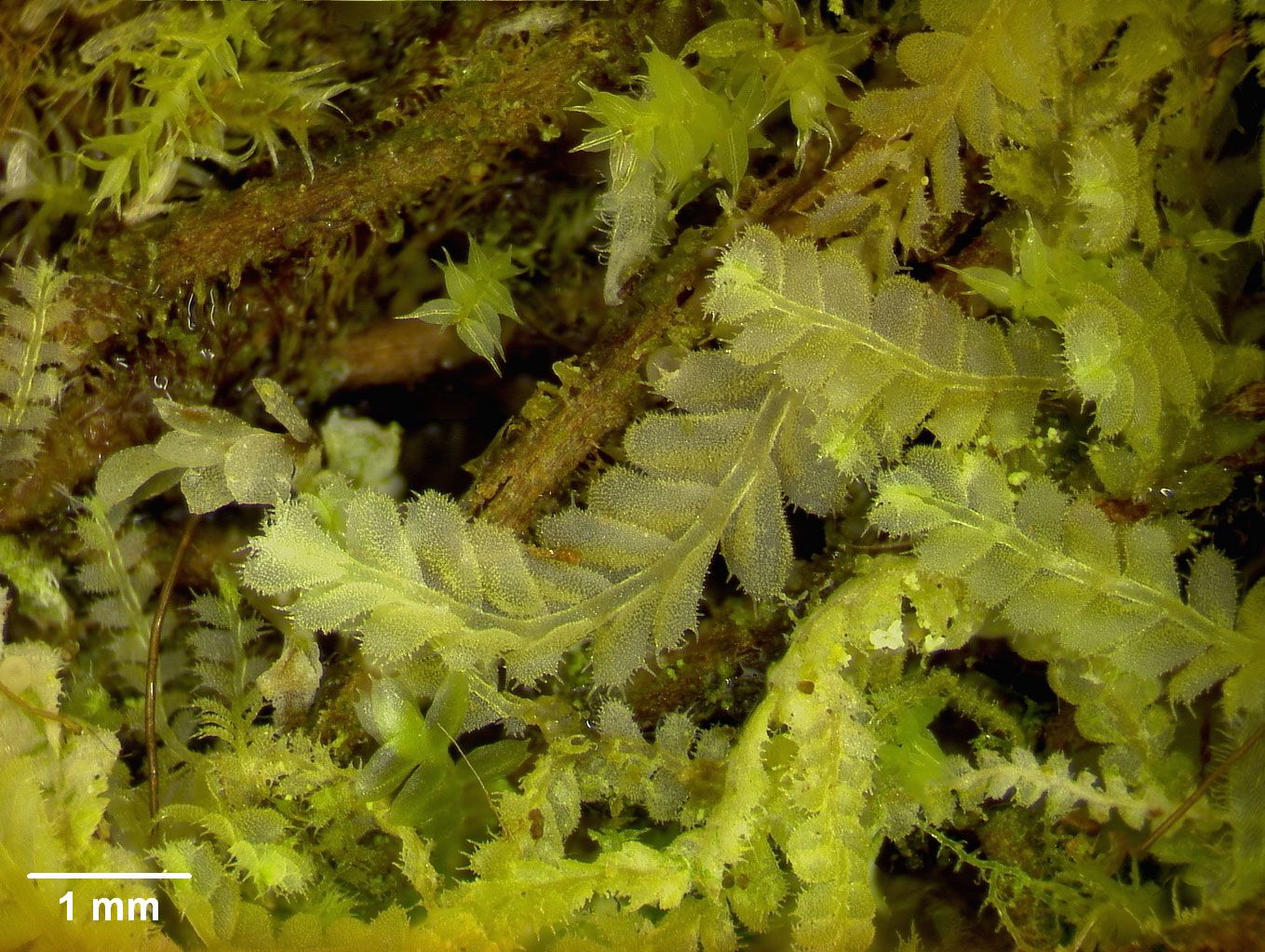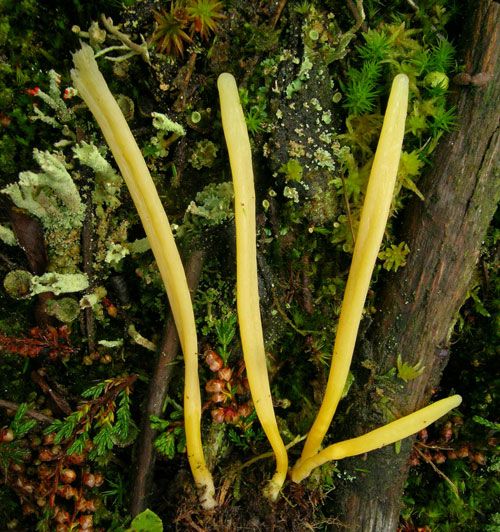Lower Plants

A leafy liverwort (Chiloscyphus echinellus)

A fungus (Clavaria argillacea)
The Lower Plants collections contain bryophytes (mosses and liverworts), lichens, fungi and algae (including diatoms). These groups represent some of the oldest organisms on earth, and they play important roles in ecosystems as primary producers and as nutrient and water recyclers. As a group, they were traditionally called cryptogams (which means their reproduction is hidden).
Bryophytes and algae harness light energy from the sun through photosynthesis. Many bryophytes grow in dark wet places, but some are found in dry places, and can withstand desiccation. Algae occur in a wide range of habitats, from the sea to freshwater, and from freezing conditions to hot springs. They include seaweeds and diatoms.
Fungi do not produce their own energy. They get the energy they need as decomposers, from dead plants and animals. In lichens, an alga and a fungus live together in a symbiosis. The alga is protected within the fungus, and supplies the fungus with energy from photosynthesis, as the fungus cannot make its own.
Collections
Our staff develop and maintain these collections, which include specimens collected from the 18th century to the present day.
They are housed in environmentally controlled rooms and archival grade materials are used to ensure the collections will continue to be available for study in the future.
The collections are enhanced through field work for surveys and research projects, by collections made by individuals, or by specimens from other institutions. Our curators make the specimens available to scientists internationally through loans.